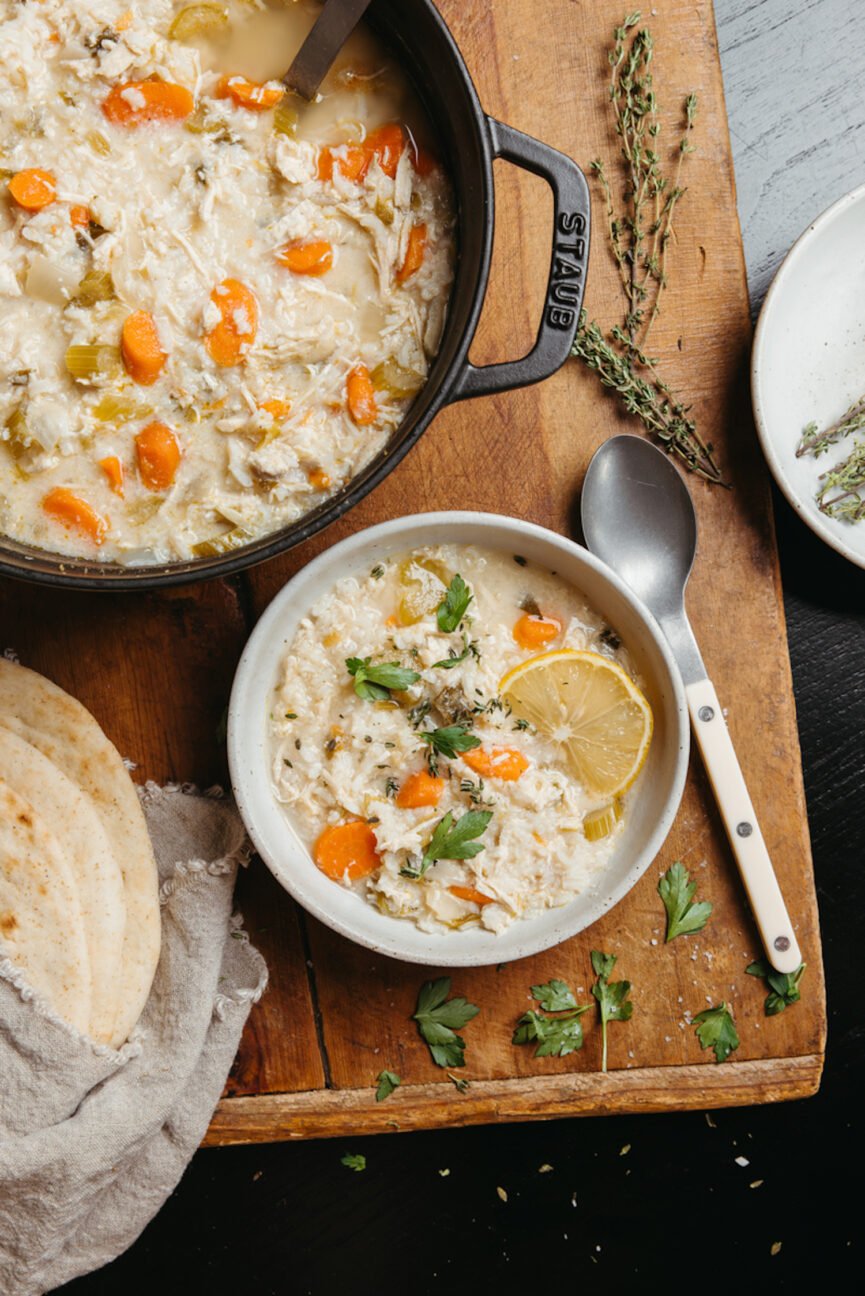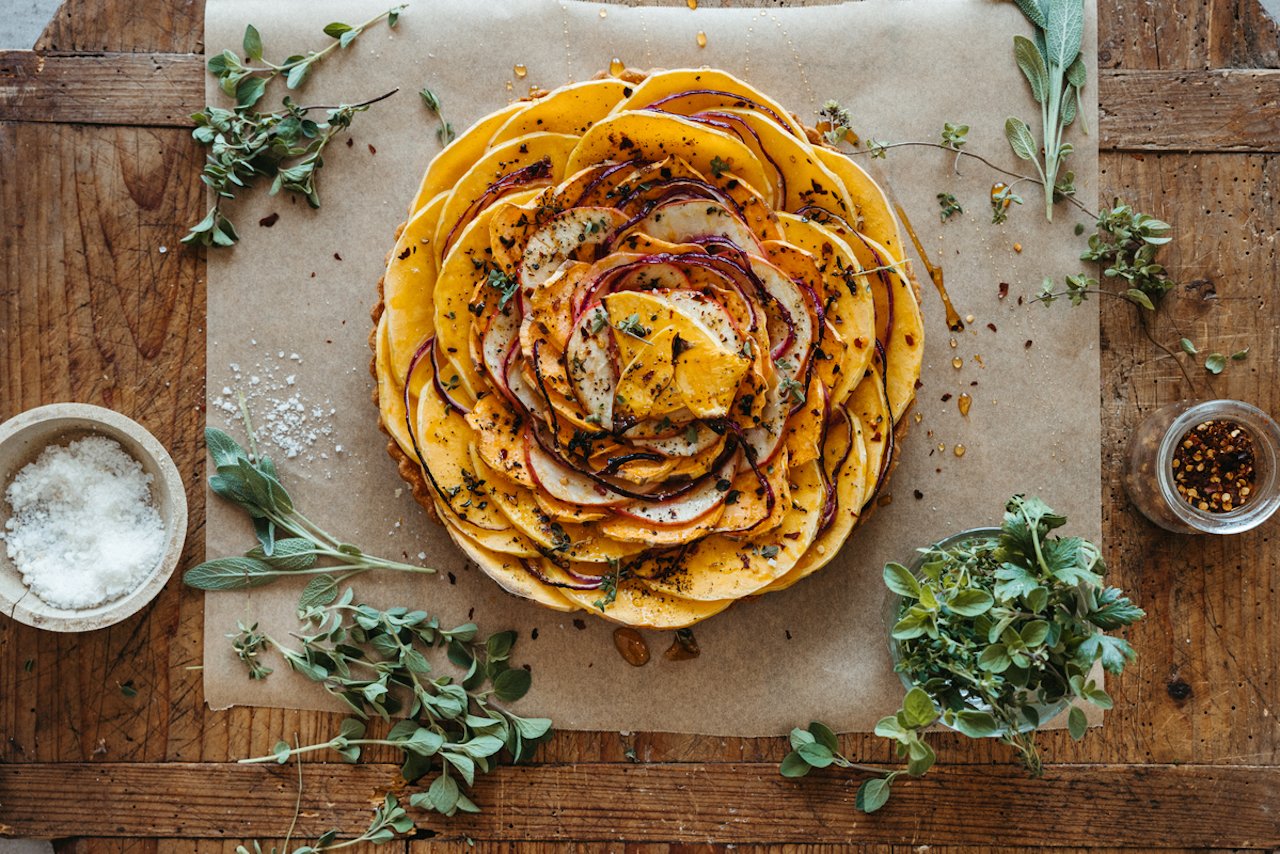And just like that, winter is upon us. Itâs time to start focusing on a new phase of nourishmentâwinter fruits (and veggies!) in season. Think root vegetables and healthy comfort food warming the body from the inside out. Post-holiday craze, winter is an opportunity to slow down, get back to the basics, and opt for foods that feed the soul. In ancient times, days were spent in front of a fire, eating foods harvested from nature. Instead of engaging in strenuous activities, we embraced several months of peaceful rest. Spiritually speaking, winter is about self-examination. Itâs an opportune time to lean into positive change and inspiration and to dream up new ideas. Speaking of new ideas, letâs dive into all the winter fruits and vegetables in season. In turn, youâll be inspired to dig into winter-themed recipes while adding variety to your fridge.

The Ayurvedic Winter Diet
This time of the year, our bodies crave nutrient-dense, filling foods. Hello, black bean chili and Thai chicken soup. Because of the cold and dry atmosphere, both our external and internal bodies become dry. Consider emphasizing Kapha foodsâthese are warm and oily. Ironically, diet culture promotes raw foods and smoothies as a post-holiday detox, but Ayurveda encourages the opposite. Instead of salads and cold foods, nourish the inside of your body with warm, cooked foods. Incorporate extra-virgin olive oil, coconut oil, and ghee.Â
Rather than sip on cold or iced drinks, go for warm or hot beverages (room temperature is also fine). Start your mornings off with a comforting tea, rich in spices like ginger, cinnamon, fennel seeds, cumin seeds, tulsi, cardamom, black pepper, and clove. Or, a Camille Styles favorite: This immune-boosting golden milk tea. Flavorful and functional, this latte will help increase heat and circulation within your body. Soups, dals, chili, and stews are all hearty and healthy meals for winter.
What foods should you eat in the winter?
According to traditional Chinese medicine, eating seasonally and locally is key. With that in mind, here are micro and macronutrients to focus on throughout the winter:
- Fruit: dates, figs, tangerines, cooked apples, apricots, and lemons
- Green veggies: cooked spinach, asparagus, Brussels sprouts, and kale
- Root veggies: onions, leeks, winter squash, pumpkin, turnips, potatoes, and sweet potatoes
- Whole grains: rice, buckwheat, rye, amaranth, and oats
- Healthy fats: macadamia nuts, walnuts, cashews, pistachios, pumpkin seeds, ghee, butter, soft cheeses, cottage cheese, warm milk, flaxseed oil, and olive oil
- Legumes: brown and red lentils, tofu, tempeh, and miso
- Meat: beef, chicken, lamb, and venison
- Herbs: ginger, turmeric, cinnamon, cloves, and black pepper
Along with root vegetables and whole grains, warming herbs like ginger and cinnamon are loaded with antioxidants to boost your immune system (key as temps drop). Warming proteins, like beef and lamb, are best cooked slow and low. Overall, a diet of seasonal veggies and fruit, high-quality proteins, grains, nuts, seeds, and legumes is essential for overall health. Aim to eat your protein first and your starchy carbs after, as this can help with managing blood sugar!
Grounding Winter Root Vegetables
Helping you align with the winter season, consider incorporating as many root vegetables as possible. Root vegetables are great for grounding because they (quite literally) grow underground. As their name suggests, root vegetables have roots that extend deep down within the earth. These roots anchor the plant in place, providing a strong foundation for its growth.
Sweet potatoes, carrots, turnips, onions, parsnips, garlic, radishes, and rutabagas are all root vegetables. These can all be cooked in warm dishes throughout the fall and winter seasons, aiding in satiation and energy.
Winter Fruits and Vegetables
With a wonderful repertoire of colors, tastes, and textures, there is a variety of fruits and veggies in season in the winter to add to your grocery cart. Below, youâll find 12 fruits and vegetables in season in winter and delicious recipes to cook with them.
- Avocados
- Beets
- Brussels Sprouts
- Celery
- Collard Greens
- Grapefruit
- Kale
- Kiwi
- Leeks
- Potatoes
- Turnips
- Winter Squash
Avocados
Ripe, ready-to-eat avocados typically yield to a gentle pressure. They may have a darker color, but it’s best to go by feel. The fruit will feel slightly soft but not mushy. Additionally, if the stem comes off easily and shows green flesh underneath, the avocado is ripe and ready to eat. Always check under the stem. If it’s brown, the avocado is likely too ripe.
What to Cook With Avocados
Beets
Beets that are small or medium-size are more tender than large ones. They should be heavy for their size. If the greens are still attached, they should be brightly colored and look fresh.
What to Cook With Beets
Brussels Sprouts
Look for bright green heads that are firm and heavy for their size. The leaves should be tightly packed. Avoid Brussels sprouts with yellowing leaves, a sign of age, or black spots, which could indicate fungus. Smaller Brussels sprouts are usually sweeter and more tender than larger ones.
What to Cook With Brussels Sprouts
Celery
When buying celery, look for firm, tightly packed stalks. They should have medium-thick ribs that are crisp enough to break easily. If the stalks feel rubbery, they are no longer fresh. Also, check the leaves and make sure they are not wilted and have a vibrant green color.
What to Cook With Celery
Collard Greens
Good collard greens are firm and crisp. This means they are relatively fresh and have been stored properly. Pick up the greens and bend them a little bit. They should be firm and not floppy.
What to Cook With Collard Greens
Grapefruit
A ripe grapefruit will be slightly red in color. The deeper the color, the more intense the flavor. Look for grapefruits that feel plump with fairly smooth skin. It should also feel heavy for its size. This is an indication that it’s juicy. Grapefruit will keep at room temperature for at least a week. However, you can store them in the refrigerator for up to two months.
What to Cook With Grapefruit
Kale
Despite different varieties, kale leaves should be firm and deeply colored, with stems that are moist and strong. Make sure the leaves are not browning or yellowing, and they are free from small holes.
What to Cook With Kale
Kiwi
In addition to avoiding blemishes or wrinkles on the skin, the only way to pick a good kiwi is by feel. Press the kiwi gently with your thumb. If it yields to slight pressure, the fruit is ripe. If it still feels hard, the fruit is not ready to eat.
What to Cook With Kiwi
Leeks
When choosing leeks at the market, they should be straight and firm with white necks and dark green leaves. Their bulbs should be pristine (neither cracked or bruised), and the leek should not be wilting or yellow. The thicker the leek, the more fibrous it is. Therefore, try to buy leeks that are more thin than thick.
What to Cook With Leeks
Potatoes
Choose small to medium-size firm potatoes with smooth skin and no bruises, cracks, or sprouts. Avoid potatoes with wrinkled skins, cut surfaces, soft or dark spots, decayed areas (usually at the ends), or sunken spots. If possible, purchase potatoes that are fairly clean but unwashed.
What to Cook With Potatoes
Turnips
Choose small turnips, which will be the youngest, with the sweetest flavor and best texture. They should be heavy for their size and firm, without any cuts. If the greens are attached, they should be brightly colored and fresh. Turnips will keep tightly wrapped in the refrigerator for up to two weeks.
What to Cook With Turnips
Winter Squash
Like all squashes, look for a squash that feels heavy for its size. Ripe delicata squash, for example, is yellow in color with green stripes along the ribs. It should be firm. Avoid squash that is very ripe in color (theyâre unripe) or has soft spots or holes.
What to Cook With Winter Squash

